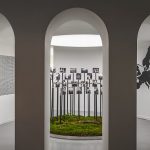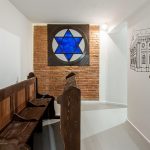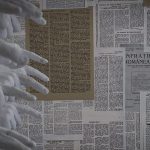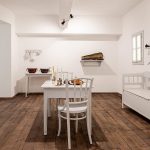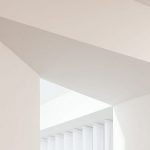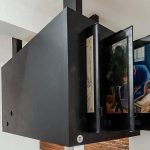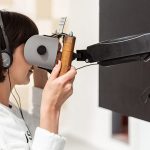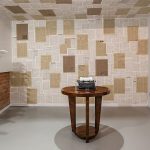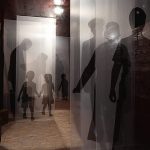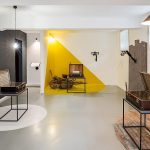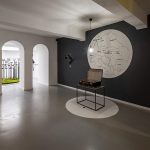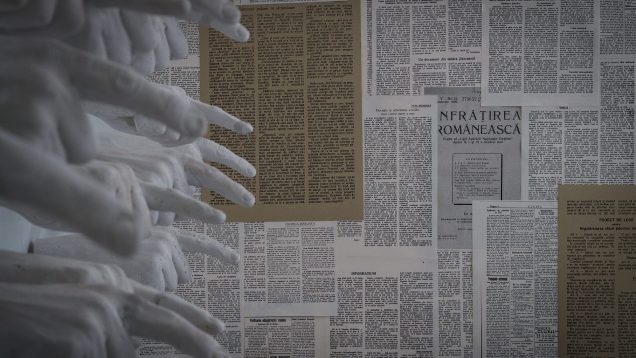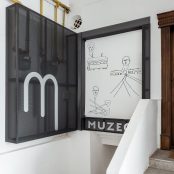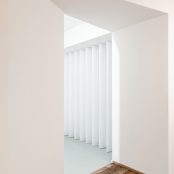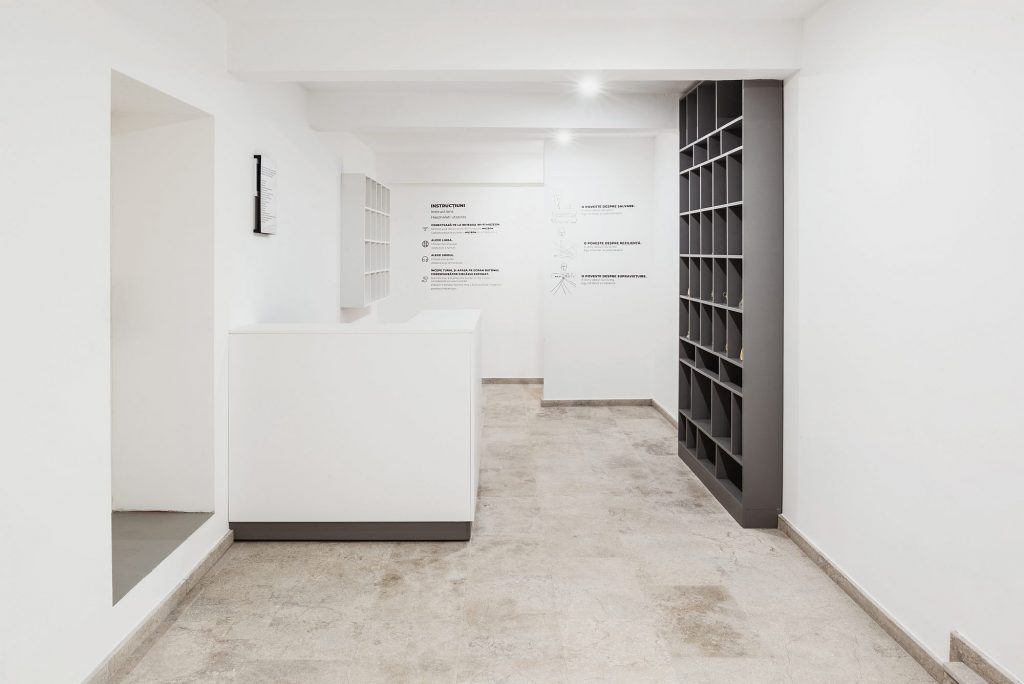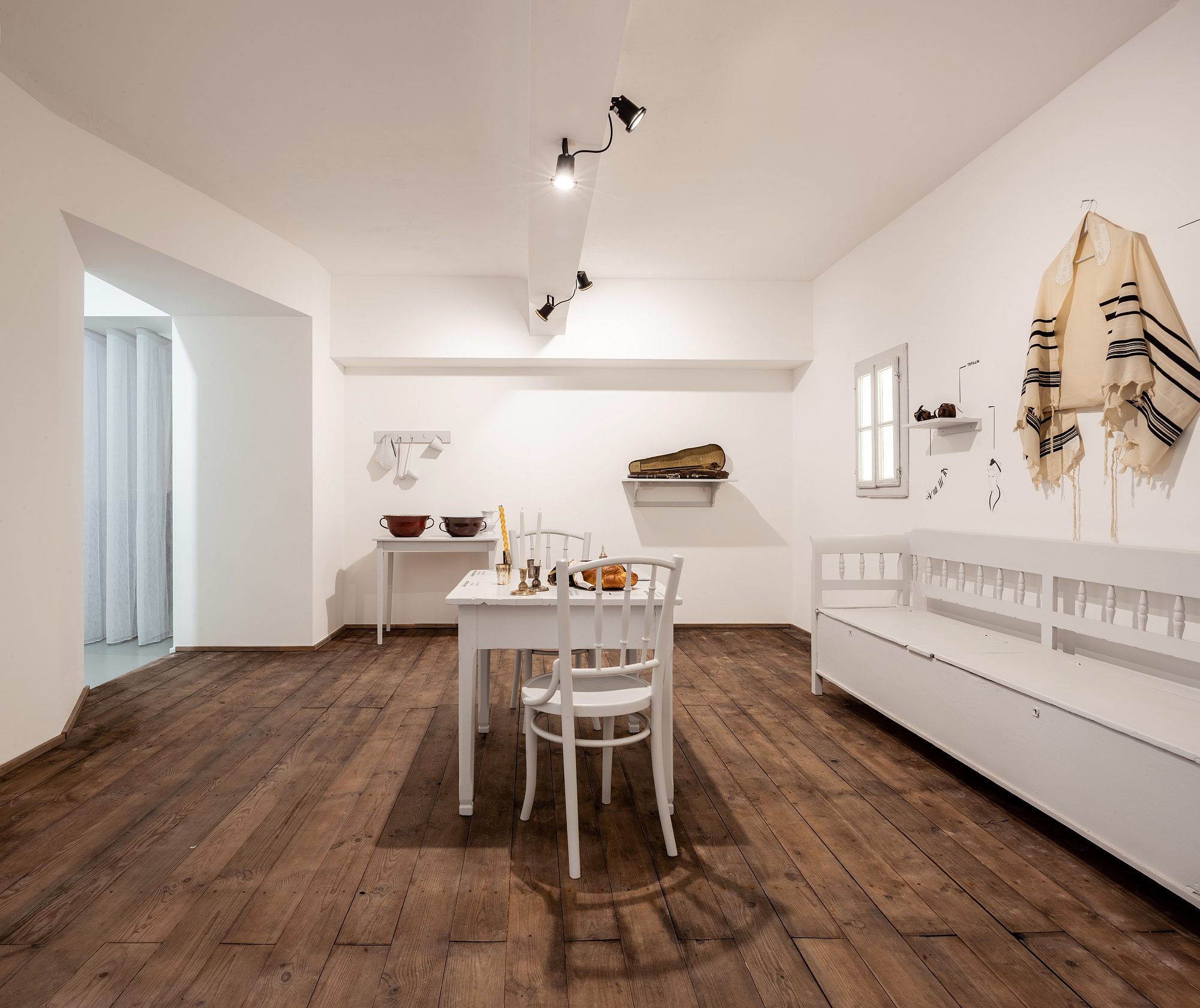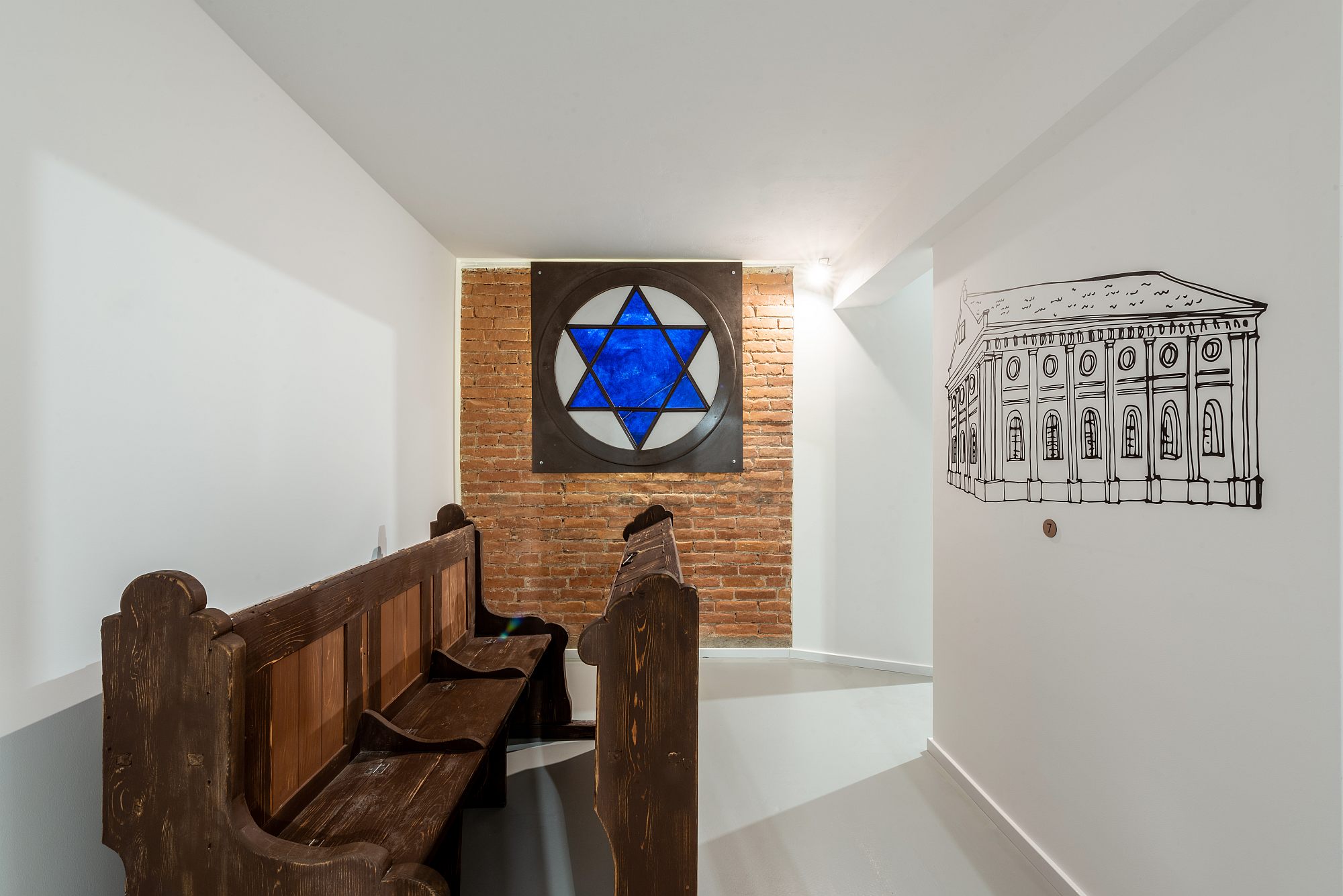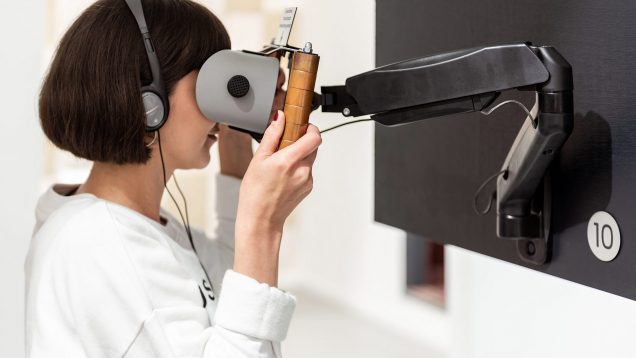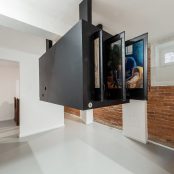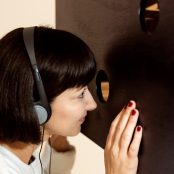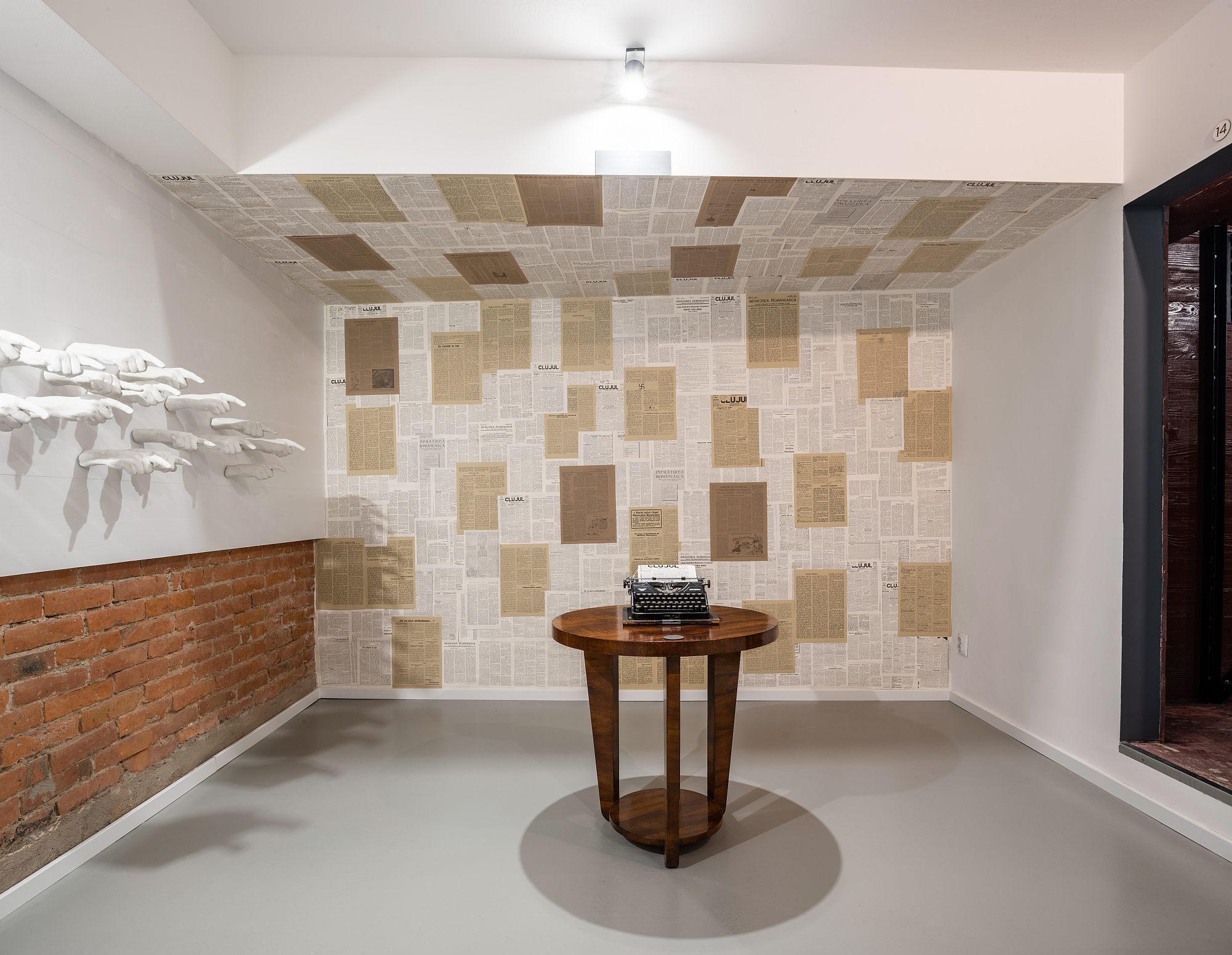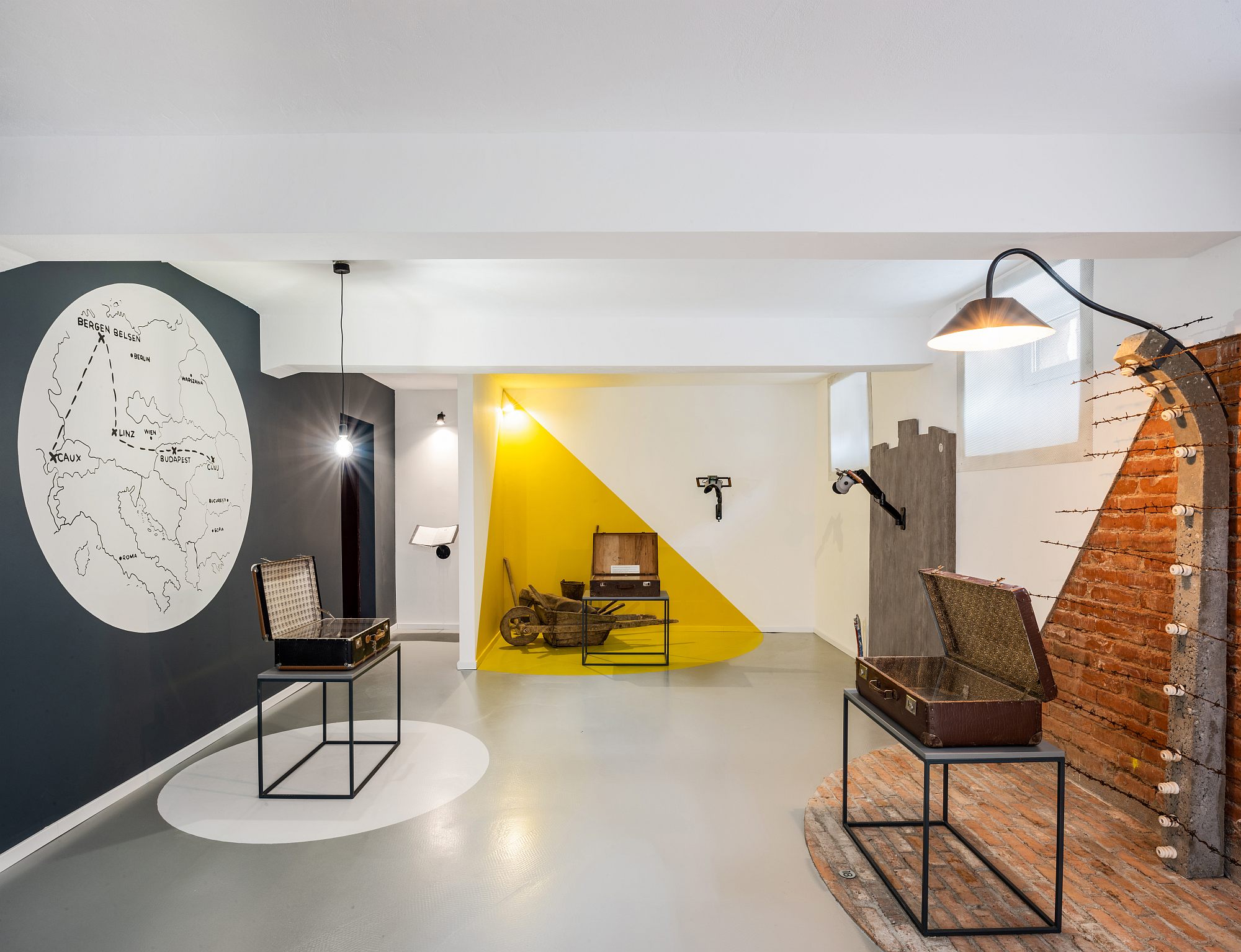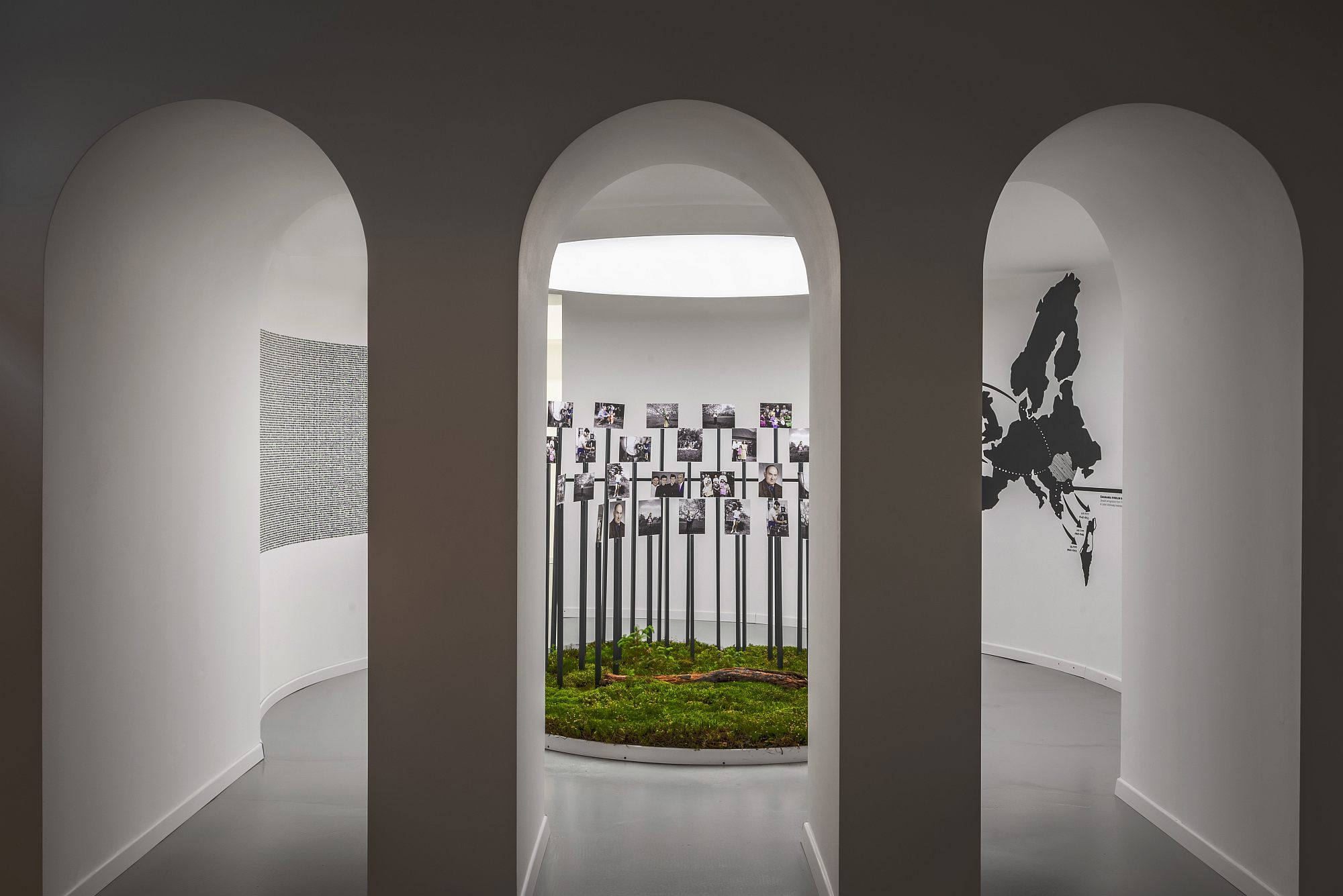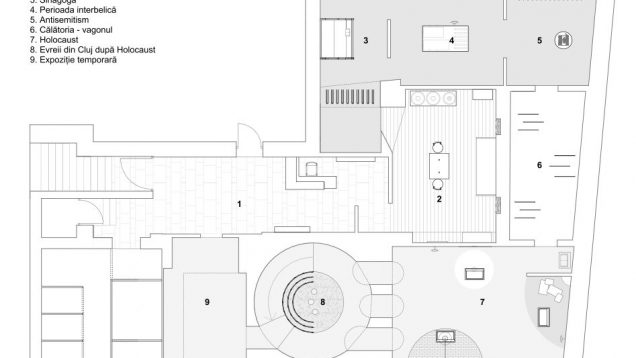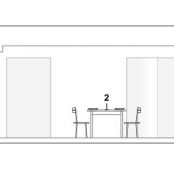This small independent museum starts from a family archive, but speaks of a community, of a city and of fundamental human experiences, and does so by a spatial and auditory experience rather than by classical museum means
Project: Atelier MASS
Text: Camelia Sisak
Photo: Gouwy Lieven
About a year ago, we received the less ordinary challenge of creating an exhibition scenography for a complex story. The space in the not-so-high semi-basement, sporting four concrete pillars in the middle, was a blank page on which anything could be done. But how can you showcase, in an interesting and exciting way, a piece of history reconstructed from relatively few, but very different letters, documents and artefacts? Everybody on the team gathered around Flavia and Dan Craioveanu contributed as well as they could to turn their idea into a very special place – a Cluj Jews’ history museum, started from the founders’ personal inquiry into their families’ past.
It all started with an old closet, where Dan discovered the completely fascinating story of his Jewish family, an archive of documents and objects collected in his parents’ home for over 100 years. Ever since, Flavia has been studying carefully, creating an incredibly rich family history, based on hundreds of letters, documents, memories and photographs. They wanted the story to stay out the bottom of a closet, they wanted it known. This is how they came up with the idea of creating Muzeon, a museum where history has a voice, the voice of the people living it. Now it is the visitors’ turn to experience the same emotion they felt when discovering all those forgotten life stories.
Many obstacles had to be overcome, from idea to final result, and it took a lot of courage and determination for things to take shape. They found a place in downtown Cluj, in the generous semi-basement of a building close to Matthias Corvinus’ house, at 3, Virgil Fulicea St. Next, they had to find the necessary funds to set up and plan, and that took about a year and a half.
The design challenge was to tell the story for a wide audience and to make it more interesting for all ages. The visual support, the route, the induced atmosphere, the light, all became very important, to provide the visitor with a complete experience; for Muzeon is an experience, not a traditional museum. It is based on personal stories, not exhibition objects, and each visitor travels through the space with the help of a character, who serves as audio guide; the three audio companions were contemporaries, and yet had very different destinies. It lacks the rigor of a classic museum, but it is very intimate in how you approach every character leading you through the exhibition.
The three audio guides, Julia, Paul and David, tell three different stories. They were real people, animated by professional actors from the National Theatre or the Hungarian Theatre in Cluj. Each story was tailored from over 200 letters and testimonials discovered first about their lives, followed by lengthy research to put together all the information and to turn it into complete narratives. This is not about elites, but the story of three common people, speaking in a friendly manner of how they lived the respective moments or how they used the respective objects. The audio guide you choose becomes your travel companion.
The visual concept provides support for the audio path, transposing or intensifying certain states, and is always connected to the story. Each space is treated independently from a visual perspective, to provide the audio story with all the necessary elements, some spaces have realistic elements, while others are more abstract.
The first space is an introduction to the Transylvanian world of Jewish culture, suggesting an early-20th century simple interior, where you learn things about customs and culture, about the Sabbath ritual, Klezmer music, Kosher food.
The next one, the synagogue, is evoked by the placement of just two characteristic defining elements, a bench (restored, received in custody from the Dej synagogue), and a stained glass with David’s star. Here you can sit down and learn local stories about this sacred space.
Next is how the Jewish community was involved in Cluj’s life. As the interwar period deals with several subjects, they were brought together in a suspended black box, which combines models and various virtual reality or manual interaction devices.
The suspended box houses a miniature cinema, playing the movies of one of the first Transylvanian directors, (when Cluj became an important Austro-Hungarian film production centre); it reveals the secrets of the Jewish hospital; it welcomes you to walk around, aided by virtual reality, among the buildings built by Jews in Cluj, and helps you discover a collection of paintings by Alex Leon, József Klein, and Dávid Jándi.
The space dedicated to anti-Semitism has several powerful visual landmarks. The visitor is made to feel exposed, pointed at, have their chest marked by the yellow star. Writing was how anti-Jewish propaganda was spread, that is why the wall in the background of this room has been lined with reproductions of newspaper articles from back then.
The moment of deportations has been transposed as a railway wagon. The inside of a wagon has been reproduced, similar to the ones transporting Jews; an installation of successive canvases in human shapes create the feeling of a crowded space. While crossing it, you discover the illusion – the human decomposition into shadows, as an analogy of the de-materialization of humanity during the Holocaust.
In the room dealing with the Holocaust itself, the three stories separate and each has another destination, symbolically placed in the light cone of a lamp. David arrives at Auschwitz and his story is one of survival, the destination suggested by some specific symbols: the brick wall characteristic of this place, the barbed wire and the fence lamp, which was reproduced after the original. Paul’s story is one of resilience, his destination being a labour camp in Baia Mare, represented by the tools used for the heavy work there. Julia’s story is about salvation, as she managed to get to Switzerland, but with great effort. The most important thing for her is her route map. Each character is carrying the letters and documents underlying the whole story.
Finally, the last space is dedicated to the post-Holocaust period and speaks of the survival of the three characters and of the Jewish community in Cluj. The portal with its three arches is symbolic for the three different destinies which, however, at community level are then found together, as all three are among those who survived. It is a concentrated, very bright circular space, with a certain dose of serenity and very different from the others. It is meant to symbolize the return to a form of normality. We selected an exhibition with survivors’ family pictures, to convey the idea that life goes on.
Interaction is an important element throughout the exhibition. The visitor cannot remain a passive viewer or listener, they must get involved, make way among the canvases, peek into the cinema hall, where Jenő Janovics’ films are playing, slide the picture panels, become the characters, look at the past in virtual reality or turn pages. Lighting is also part of the exhibition and is an important element, that takes the state of the community into account. Where at first everything is bright, the light gradually fades toward the anti-Semitism period, the wagon is almost in darkness, then each character lights up a different road, and light returns in the end.
The museum’s mission is to be a place of active reflection on the memory of the Jewish community in Cluj and on their contribution to the local culture. As people experiencing important moments fade into history, forgotten life stories must be brought back to inspire others. We are at a point where we do not know much about this part of our history, which is why Muzeon tells, to the whole world – the story of our Jewish neighbour.
*Plan and sections
1. Reception. 2. Jews in Transylvania – 1900. 3. The Synagogue. 4. Interwar period. 5. Antisemitism. 6. The Voyage – the railway wagon. 7. The Holocaust. 8. Jews in Cluj after the Holocaust. 9. Temporary exhibition
Info & credits
Interior design: Camelia Sisak, Roxana Udrescu (Atelier MASS)
Curator (documentation, research, text): Flavia Craioveanu
Technical director: Dan Craioveanu
Graphic design: Cătălina Nistor
VR Projects: 4D Pixel
Models: Istvan Matuz
History consultants: Zoltán Tibori-Szabó, József Luckács
Text consultants: Cătălin Bogdan
Audio recording: Boom Studio

